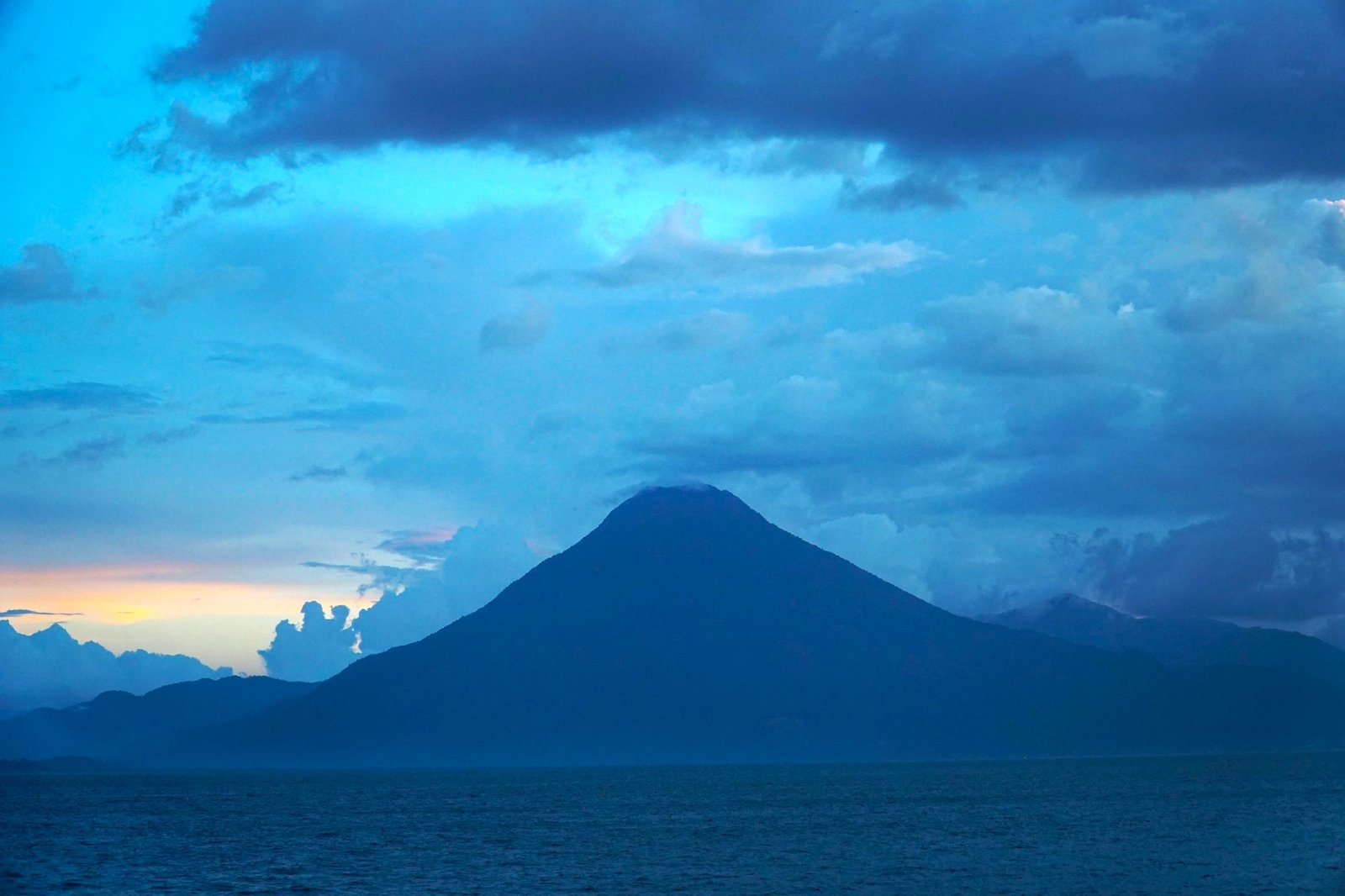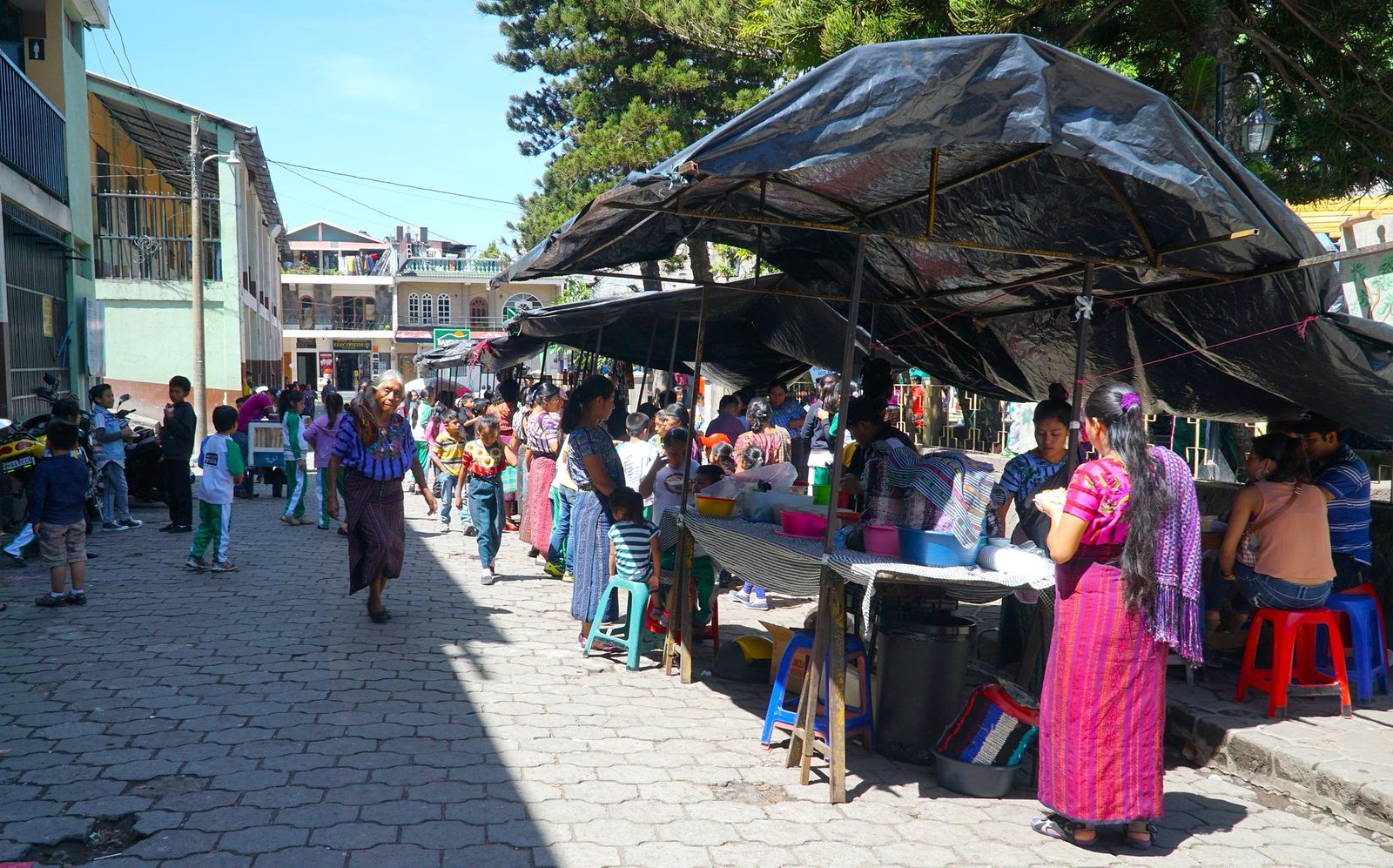When people ask me about the most exotic place we ever visited, I am always torn about how to respond. Was it Egypt with its ancient temples, monuments, and stunning deserts? Or India with its dream-like Taj Majal, colorful towns of Rajasthan, and ceremonial pyres burning corpses non-stop in the holiest city of Varanasi? Or maybe Japan with its skyscrapers, traditional wooden houses, and a technologically advanced society from the future? All are excellent options; yet, time after time when I am asked this question, I keep thinking of Guatemala.
Some might say there is nothing unique or exotic about Guatemala as it is pretty much like any other country in Central America. Volcanoes, coffee farms, colonial architecture – all of these you can find in Costa Rica, El Salvador, or Nicaragua. And while it is true that Guatemala shares a lot in common with its Central American neighbors, there is one place there that leaves even a seasoned traveler speechless - Lake Atitlan.
The prominent travel blogger of the 19th century, Alexander van Humbolt, described Lake Atitlan as “the most beautiful lake of the world”. We can attest that the superlative holds up even centuries later. This caldera lake in the Guatemalan Highlands is truly impressive and postcard-perfect. Majestic volcanoes towering over the shimmering colors of green and blue water - the image could be on the cover of National Geographic. If you park yourself on the shore and do nothing but stare at the lake all day long, that would not be a bad day at all. The views are just staggering.



Yet, the better way to explore the lake is by hopping on and off small boats serving as water taxis (lanchas) to traverse the lake and visit the surrounding communities. There are a lot of villages surrounding the shore, and each has its unique, specific vibe. With only two days in the area, we could not possibly go to every single one, but we still managed to visit three villages.
San Pedro la Laguna was probably the most popular village, but we did not care much for it as we found it to be too touristy. Although it had the infrastructure (e.g., hostels, bars, and restaurants), it mainly catered to backpackers and partying students. It reminded us of the backpacker’s hell of Khao San Road in Bangkok, and for this reason, we did not linger in San Pedro la Laguna for too long. Luckily, all it took to change the scenery was to jump into a lancha and go to another village.
Our next stop was the neighboring San Juan la Laguna, and we absolutely loved it. Unlike San Pedro la Laguna, it was much quieter and peaceful. Also, it had an artistic feel to it with several galleries selling the works of local Mayan artists. We popped into a gallery of Antonio Coche Mendoza and his wife, Angelina Quic Ixtamer, who are well-known in Guatemala and beyond for their unique naïve Mayan painting style depicting local scenes in bold, vibrant colors. The signature painting is a bird’s eye view of a market with colorful huipil dresses of the Mayan women blending with brightly depicted fruits, flowers, and other produce into one intense cornucopia of color. We browsed the gallery and even purchased one painting to take home. As with every village around Lake Atitlan, the most coveted spot was at the pier providing a gorgeous view of the lake. While we were waiting for our lancha back to our AirBnb in Panajachel, the afternoon light magnificently illuminated the lake and surrounding volcanoes and mountains.



The most exotic village around the lake was Santiago Atitlan. Like most communities in this region, Santiago is mainly populated by Tz’utujil Mayans, one of the many Maya ethnic groups living in Guatemala. Once we disembarked a lancha, it felt as if we stepped inside one of Paul Gaugin’s paintings (I know Gauguin painted Tahiti, but the vibe was similar). At the shore, topless Mayan women were washing clothes while kids were merrily swimming in the lake in the shadow of the imposing San Pedro Volcano.
From the pier, we headed to the village center and stopped there to take in the atmosphere. The village was rustic, colorful, and authentic. If in San Juan la Laguna we saw huipil dresses depicted in the paintings, here, we were surrounded by women wearing these beautiful, purple-colored dresses. The village was going about its daily routine. Schoolchildren were playing outside enjoying a break between classes, women were shopping or selling produce at the open-air market, and men were chatting or having a smoke. As we tried to listen to some of the conversations, it dawned on us that most of them were not in Spanish but in the local tongue.
But we came to Santiago not only to mingle with the Maya people and wander around the village. We were there on a mission to find ... God! Yes, you read this right. We were searching for God in this remote Guatemalan village. But not just any God but the one who drinks, gambles, and is venerated by criminals and outlaws, such as smugglers and drug traffickers. We came to see Maximón - a Mayan deity of the Guatemalan Highlands.
Finding Maximón (or Mashimon as he is also known) was not an easy task. There is no house of prayer where you can just go and see him. Rather, a wooden effigy of this local saint resides at an unmarked house and changes location by moving from one family to another every year. As we followed crooked alleys and streets, we kept asking the locals for Maximón and they pointed where to go. Finally, we found him. Before our visit, we did not know what to expect and knew only that Maximón was a narco-saint who represents both light and dark and is generally considered to be a trickster. We quietly entered a dark room filled with burning candles and flowers. Maximón was in the center of the room with two attendants sitting on each side of him. We looked at Maximón … and did not know how to react. We stood there silent, frozen, and I kept glancing at Julia, hoping that she would not say anything inappropriate.



A wooden effigy of an old man was dressed in colorful shawls, had a cowboy hat on, and a long red tie hanging low, Trump-style. He had a cigarette in his mouth and money bills sticking out of his pockets. At his feet, there were bottles of whiskey or rum. The attendants were quite focused, constantly checking on his attire and replacing burnt-out cigarettes with new ones. They also were throwing at us occasional glances as if expecting some sort of offering. So, what do we do now? Do we offer Maximón money? Should we go outside to the store and buy him extra booze? We just stood there trying not to offend anyone but feeling very awkward. Finally, when another couple of tourists entered the room, we felt it was finally appropriate to bow out and allow new potential followers to pay their respects to Maximón.
My only regret was that we didn’t come to Guatemala during Easter week, when apparently Maximón is taken out and paraded around along with a statue of Jesus, either in a show of collaboration or opposition, we are not quite sure.
It’s hard to put my finger on what exactly makes Lake Atitlan one of the most exotic destinations we visited. Most likely, it’s the combination of the indigenous Maya communities with unique traditions, religious practices, and languages, as well as the stunning scenic beauty of the volcanic landscape, and the remoteness of the region that makes it feel so isolated and peaceful. Much like Glastonbury in the UK, we might not fully understand the traditions and beliefs of the local community, but it’s clear that this is a sacred place of great spiritual significance.
Next time we will bring Maximón some money. And maybe even cigarettes.

